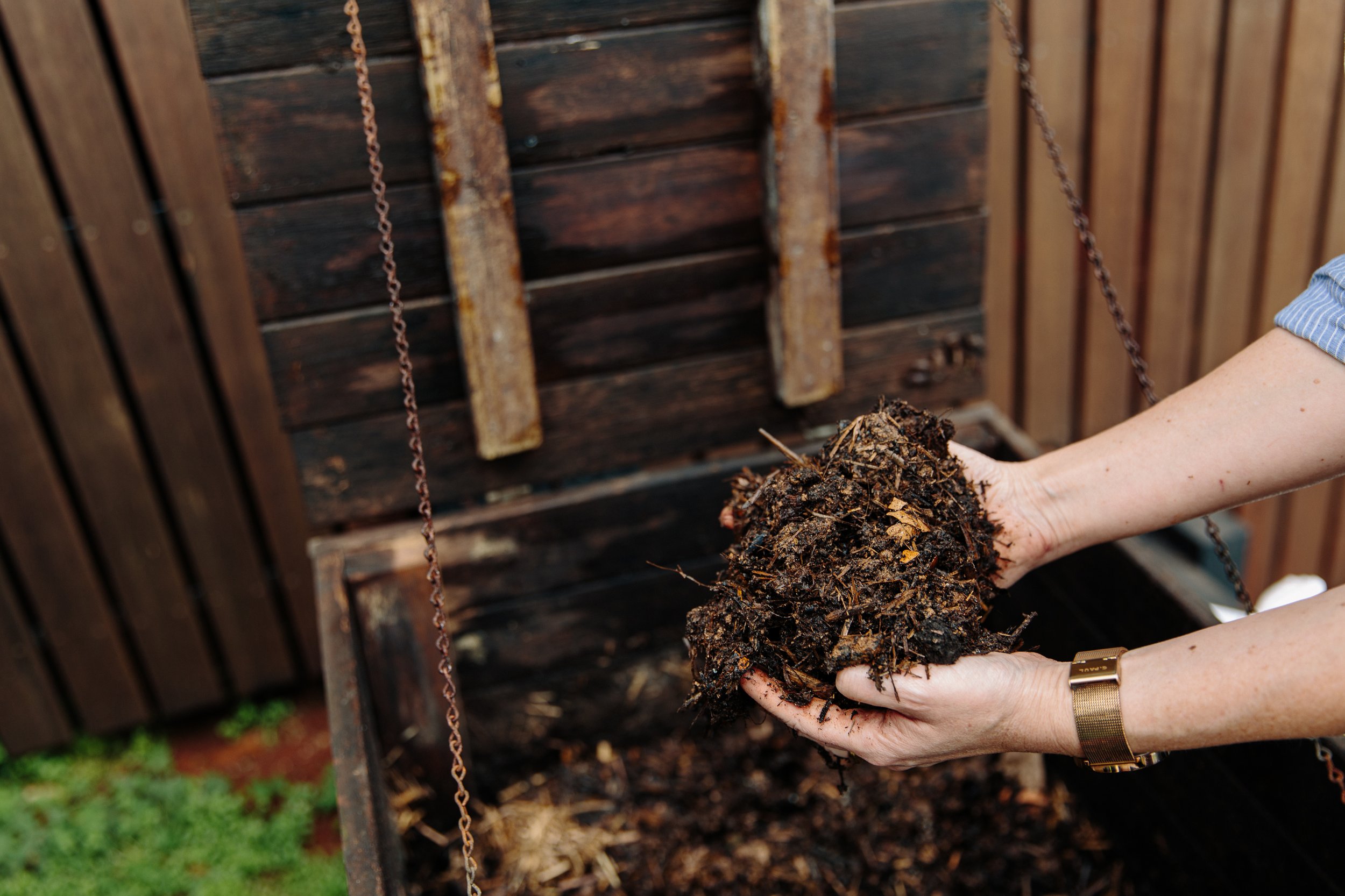CAN COMPOST GO BAD?
Compost that is almost ready to use is moist but not soggy. It has a good break down of material and has a good crumbly consistency. It doesn’t smell putrid or have slimy bits in it.
From time to time a compost pile can go bad and it can be very upsetting particularly if you've put heaps of effort into the compost. If your compost pile has an unpleasant odour, has mouldy or slimy material, is teeming with flies, there is too much moisture, or it isn’t decomposing your inputs, then chances are you have a bad compost on your hands.
As compost decomposes it can grow dangerous mould spores and bacteria. Mould spores have the potential to produce mycotoxins, which are powerful toxins that affect muscle coordination. As some of the food items in the compost decays it can also grow toxic bacteria that can cause serious illness for humans and animals. You shouldn’t use the compost when it's in this state as it can contaminate the soil in your garden and be harmful.
However, having a bad compost pile doesn't mean you have to throw out the entire pile. There are some easy organic methods that you can use to save a bad compost bin. Here are some tips to rescue your compost bin and get it back in good shape.
1. Aerate the compost pile – Oxygen is essential for healthy decomposition of organic materials. Use a garden fork or shovel to mix up the material in the compost pile, breaking up any clumps or lumps that may have formed. Make sure to stop at least 10 inches from the bottom of the pile so as not to disturb beneficial microorganisms living there.
2. Add nitrogen-rich materials - Nitrogen helps fuel microbial activity and speeds up decomposition of organic matter. Good sources of nitrogen for composting include fresh grass clippings, manure, coffee grounds and seaweed.
3. Check the water content - Too much or too little moisture can inhibit microbial activity and slow down the decomposition process. To check the moisture level of your compost pile, squeeze a handful of material – it should feel damp but not soggy. If it's too dry, use a garden hose to add water until it's dampened properly. If it's too wet, add more dry organic material such as leaves, straw, cardboard or wood chips to the pile.
4. Monitor temperatures – The ideal temperature range for a healthy compost pile is between 120°F-160°F (49°C-71°C). Use a thermometer to measure temperature in several places throughout the pile; if it is too cold, add more nitrogen-rich materials and turn the pile more frequently. This is best done in the form of nitrogen rich manure that is well cured such as rooster booster.
5. Use a compost activator - Compost activators are specially formulated products made from microbial cultures, enzymes and Trace Minerals. When added to a compost pile, they quickly boost bacterial activity, helping to speed up the decomposition process and return your compost bin to good health. Simple organic activators you may have on hand are lime (limestone), blood meal (yes, it's dried blood), fish meal, and poultry, rabbit, and horse manure. Rabbit food (pellets) and dry dog food are also organic activators that are often have on-hand.
6. Add air pockets - The compost pile needs to be able to "breathe" in order for aerobic bacteria to thrive. To create air pockets, use a garden fork or shovel to break up any clumps and mix the material well. Make sure to not disturb the beneficial microorganisms living near the bottom of the pile. I've created a nifty contraption out of some pvc piping that has heaps of holes drilled into it which I sometimes place in the middle of my compost bin to get extra airflow into the middle of the pile.
7. Monitor pH levels - Compost works best when it is slightly acidic (6-7 on the pH scale). If your compost pile is too alkaline, add some organic materials such as coffee grounds or citrus peels that are more acidic in nature. If your compost reading is too acidic, add some lime or wood ash to raise the pH level.
8. Add brown materials – Brown materials such as dead leaves, raw cardboard (no glossy paper or too much ink), shredded paper or straw provide carbon which helps fuel decomposition process. When adding these materials, make sure they are chopped or shredded first to make it easier for microorganisms to break them down.
9. Cover the pile - To help keep moisture levels in check, cover your compost pile with a tarp or plastic sheeting. This will also help lock in heat and create an environment where beneficial bacteria can thrive.
10. Add microbes – If all else fails, you can add beneficial microbes such as compost tea to jump-start activity in your compost bin. Compost tea provides your pile with beneficial bacteria and fungi that help break down organic matter quickly and efficiently.
With these simple tips, you can save your compost bin that has gone bad and get it back in healthy working order. Don't be discouraged if you encounter problems with your compost pile – with some attention and care, it's possible to restore it to its former glory! With regular attention, you'll soon have a beautiful compost pile that is full of rich, organic material.
Good luck and happy composting!

